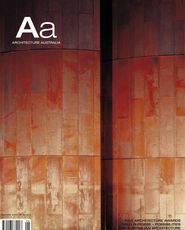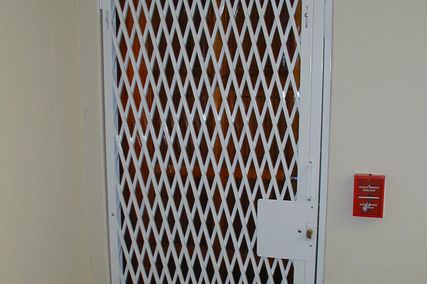IN MY FIRST AA message, following my appointment as RAIA National President in May, I referred to the changes being implemented within the American Institute of Architects to ensure that its members are adequately prepared for the future. Eugene Hopkins, President of the American Institute of Architects, outlined the AIA’s vision by stating its belief that the profession of architecture is changing from being about what architects do to being about what architects know. As a consequence, the AIA is currently transforming itself to deliver the services architects will require to become a knowledge-based profession.
This is a significant change in the architectural paradigm, and one that may have parallels in Australia. So that RAIA members can have access to the knowledge that informs such changes, the RAIA National Council has recently approved a National Policy for Architectural Research. I personally believe that this is a significant step forward for the RAIA and I wish to commend the work undertaken by the enthusiastic members who comprise the Research Working Party of the National Education Committee (NEC).
The key objectives of the policy on architectural research are:
- To promote architectural research as an endeavour that will increase the knowledge base for the practice of architecture.
This will permit the National Education Committee to establish a national research working party to guide the implementation of the RAIA research policy. This working party will investigate research undertaken within Australia, as it relates to practice in other professions such as law and medicine and considering aspects such as funding and collaborative research. It will also facilitate the dissemination of research by seeking regular publication in Architecture Australia and it will ensure that RAIA national conferences include sessions devoted to the results of architectural research.
Following these initial investigations, it is intended that the RAIA will conduct a national survey of architectural practices to seek information on research activities. This survey will determine areas of research interest, the specific needs for research within practices, priorities for investigation and the extent to which practices are currently using government tax incentives to offset the cost of research.
As part of this strategy, the RAIA will also liaise with Australian government, in particular the Australian Research Council, to broaden the definition of research within the discipline of architecture, so that a range of architectural endeavours, including design activities that meet the definition of research, can be recognized under government guidelines.
In the longer term, the intention is to establish a section on the RAIA website dedicated to research in architecture. This would include a database of current research activity (including contact details within practices and universities), specialist researchers and their areas of expertise, and details of current research funding and scholarships available in Australia and overseas. However, if architectural research is to achieve the changes within our profession that are envisaged by the NEC, then access to significant funds will be required.
One way in which we can raise funds for research is through an RAIA Architectural Foundation. A foundation of this nature would enable those wishing to provide funding for research to receive a tax deduction for donations. This would mean that it could attract funding for this purpose on a tax deductable basis. The establishment of such a foundation is listed for consideration at the next meeting of National Council.
With all these initiatives now underway, I look forward to a substantial improvement of the RAIA’s capacity to meet the needs of practising architects and those in academia through enhanced research and development activities leading ultimately to our main objective: the advancement of architecture.
Warren Kerr FRAIA, HONAIA
National President RAIA















